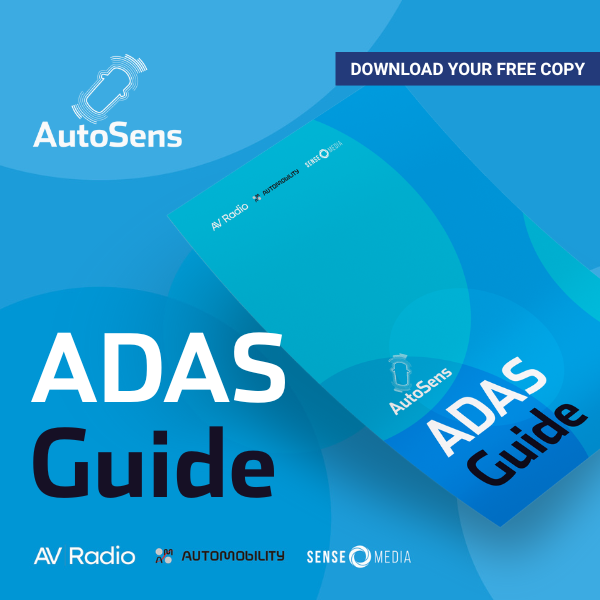Speaker Interview: ADAS Meets Navigation
Ahead of his session at InCabin Europe 2025, Paul Schouten, Senior Staff Designer at TomTom highlights how enhanced, real-time map data can overcome sensor limitations such as range, occlusions, and weather, by providing foresight beyond the sensor’s view. To find out more, read the interview below ⬇️
1. You’re giving a presentation at InCabin Europe 2025 entitled: ADAS Meets Navigation. What limitations do current sensors suites for ADAS face when it comes to observing or predicting road context, and how can enhanced map data help fill those gaps?
ADAS sensor suites face limitations due to various factors such as range, occlusions from road users or trees, and adverse environmental conditions like snow or fog. These challenges make it difficult to fully observe or predict the road context. However, location content can bridge these gaps by extending sensor perception with information that goes beyond the sensor’s line of sight, providing redundancy when sensors are blocked or misread the environment.
By understanding typical driving behaviour, such as common trajectories and speeds through specific road segments, location data supports the ego vehicle and helps predicting behaviour of surrounding road users. It provides crucial information into road rules, including speed limits and lane restrictions, even when signs or markings are unclear, occluded, or missing. Furthermore, it delivers real-time road intelligence regarding traffic, incidents, and closures that sensors alone cannot detect. Altogether, these capabilities enable a more reliable and anticipatory undertaking of the road.
2. How can using detailed maps and real-time road condition data contribute to system robustness and redundancy, especially in edge cases or sensor dropouts?
Maps are often seen as static, flat representations of the road. However, modern mapping systems integrate detailed road layouts with real-time road conditions and behavioural insights from other drivers. This means we are dealing with highly dynamic information, which is crucial for the ADAS system to ensure a safe and comfortable ride.
Think about a temporarily closed lane. The ADAS system needs to change lanes to be in the safe lane. This shouldn’t happen at the last moment when the sensors detect the lane closure. Instead, it should occur proactively, based on map data, allowing sufficient time for a smooth and safe lane change. Knowing the safe lane ahead is vital for a great user experience and can be influenced by various traffic events or hazards, such as roadworks, objects on the road, or even a turn-dependent traffic jam at an exit.
Consider another example: an upcoming traffic jam that the sensors may not detect in advance due to a dropout or the fact that it’s just around the corner. With real-time traffic data, we can inform the ADAS system to gradually reduce speed and communicate to the driver the reason for this adjustment.
3. In what ways can map-based foresight improve driver trust and system reliability, particularly in complex or unfamiliar driving environments?
It starts with the behaviour of the vehicle. Take something as simple as a speed bump. A human driver might instinctively slow down. A self-driving car, however, needs to know it’s there and the optimal behaviour for handling it. Highly detailed maps integrate insights from millions of human trips to predict safe speeds, preferred paths, and local driving customs.
By anticipating the road ahead and integrating knowledge about the typical behaviour of thousands of other drivers who have driven on that road before, automakers can create a smoother, safe, and more comfortable experience for their customers. Choosing the right speed, safe lane, and optimal lane position fosters this trust.
This path planning is enabled by the map, but the planned route also informs the ideal behaviour ahead of time, especially in preparing for future instructions.
Another key product that facilitates safe and smooth path planning is our behavioural map product, which reveals how real people drive at specific locations based on historical data. These behavioural maps function like the experience of a seasoned taxi driver versus a newcomer. Rather than learning from scratch each time, the vehicle can draw on the collective knowledge of countless journeys to make safer, smoother decisions. Having a highly detailed map gives the perception system a much greater confidence boosts in its decision-making.
Trust is not only built through the right behaviour but also through clear visualization of what the car sees and plans to do. A solid visualization of the road ahead, with minimal flickering of markings due to computer vision, significantly enhances this experience. Moreover, as our map can display information further ahead, drivers can anticipate necessary actions, such as braking for an upcoming traffic light, turn, or traffic jam. Connecting the planned path to the planned route is essential, as it establishes a single source of truth upon which the driver can rely.
4. What role does user acceptance play in the successful deployment of assisted driving features, and how does TomTom’s approach aim to increase user confidence?
It is crucial that we design the product with the end-user in mind, which makes user acceptance vital. However, we often observe that current ADAS products are underused due to a lack of trust or knowledge, or simply because they are not designed effectively, leading to frustrated users.
Our data must first and foremost enhance the product. By providing accurate data on speed limits, traffic conditions, and routing services, the system can become more relevant to the user. This enhanced data also contributes to a smoother and safer ride.
Secondly, trust is built through clear visualization that makes the human-machine collaboration very explicit. This includes what the car sees and does, as well as what drivers can expect at various levels of autonomy.
It is essential that drivers engage with the systems at key moments. For instance, when planning a route, we can show them the available time for automated driving, which can make their journey more enjoyable or even more productive. This serves as a reminder that drivers can utilize their ADAS systems. Reminding them during stretches of autonomy is crucial; when the vehicle can take over, they can work or relax. Even time spent in a traffic jam can become a positive experience, giving back valuable time to the driver. They can relax until the ADAS system notifies them to take back control, based on our accurate and real-time traffic information.
5. Why are forums like AutoSens and InCabin essential for fostering cross-disciplinary collaboration in the ADAS and in-vehicle experience space?
The user experience for automated driving is ultimately defined by a holistic end-product. Every aspect of the vehicle, from sensors to screens, plays a critical role, particularly the integration of these different elements. This makes early discussions, knowledge sharing, and collaboration among all stakeholders essential to ensure a superior final product for the end-user. Forums like AutoSens and InCabin serve as vital platforms for fostering this cross-disciplinary collaboration, bringing together experts from various fields to exchange ideas and insights that contribute to the development of more effective ADAS and in-vehicle experiences.
Interested in exterior sensing technology?
With a pass to InCabin Europe, you’ll also gain access to our co-located sister event, AutoSens. Take a look at the AutoSens agenda here >>





